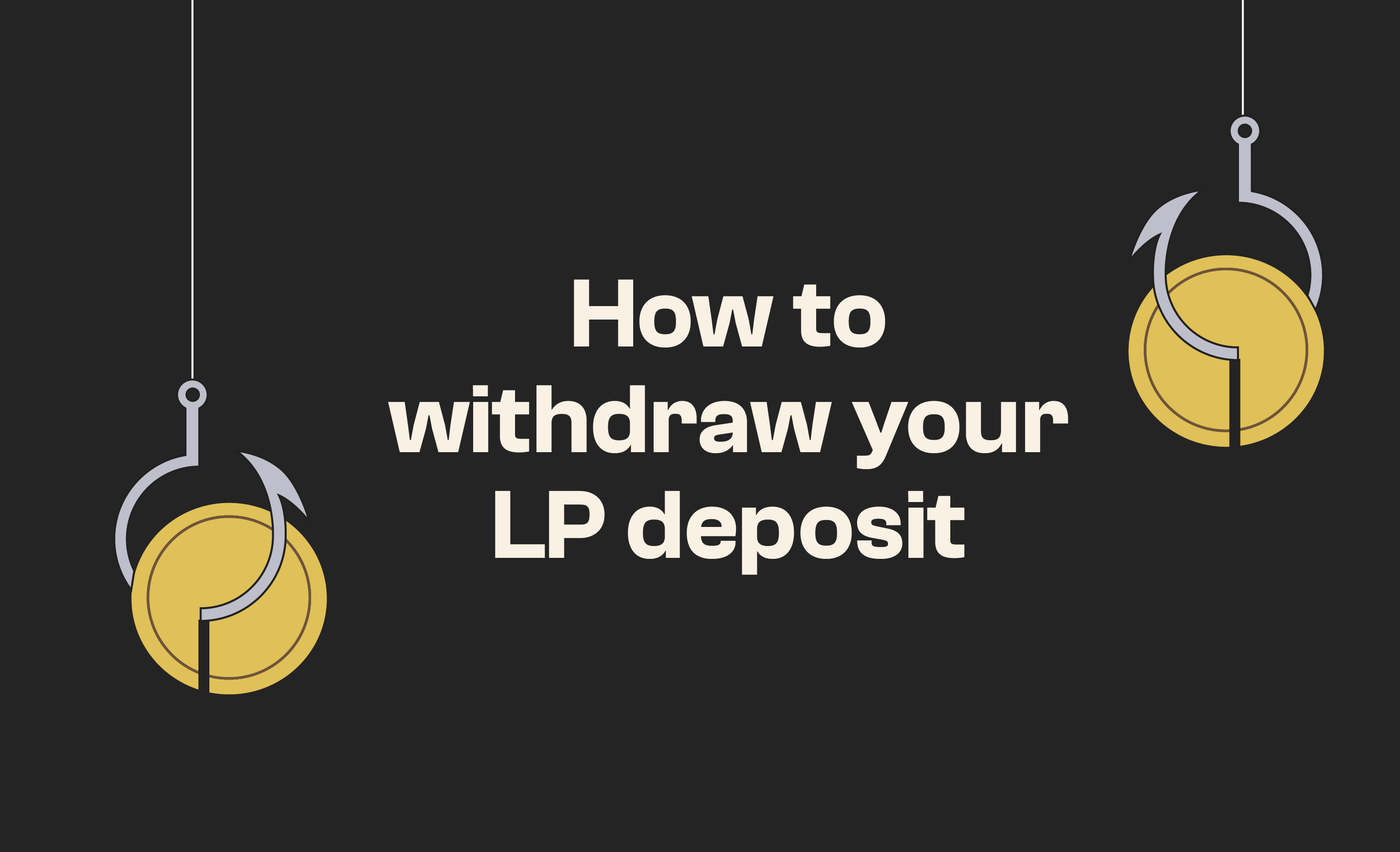How to Withdraw Your LP Deposits & Rewards on Clipper

Clipper’s goal is to offer the best trade prices for DeFi users, and liquidity providers are critical to making this possible. Below is a rundown of how Clipper’s LP model works, and how users can claim their LP deposits and rewards on Clipper.
Clipper’s Pool Tokens
Each time a liquidity provider contributes to a pool, they receive a certain amount of fungible ERC-20 pool tokens (“CLPRDRPL”). These tokens represent their fractional ownership of the underlying pool and enable Clipper’s protocols to normalize each LP’s deposits and withdrawal amounts by calculating their pool value per token. These tokens have no value other than as represented in the LP pool.
To withdraw their LP deposit and accrued rewards, LPs must burn their CLPRDRPL Clipper pool tokens in return for either a single-asset withdrawal or a proportional mix of all the assets in the pool – not just the crypto assets they originally deposited.
If you choose the second option, the relative composition of these assets is determined by each asset’s external market prices, which Clipper uses to calculate the value per token for our pool. This is done by taking the value of the assets at those external market prices and dividing that value by the number of tokens in the pool.
Claiming LP Deposits and Rewards
Here’s a step-by-step guide on how to deposit and withdraw from Clipper’s liquidity pool:
- You deposit 1,000 USDC in Clipper’s pool.
- The protocol captures the value of your deposit in USD. Based on that value, your account is given an amount of CLPRDRPL (pool tokens). You may get more for depositing an undersupplied asset in the pool to maintain a stable composition of assets.
- Where are your tokens at this time? They are held by the Clipper Pool itself in a data structure called vestingDeposits. You can query that data structure using, for example, Polygonscan directly.
- Your value increases or decreases based on trade volume and asset prices. It is locked for a short period of time to stabilize the pool for traders.
- You may unlock your tokens at any time from the Clipper contract. Unlocking moves the Clipper LP tokens from the Clipper Exchange contract to your wallet and deletes your entry in the vestingDeposits mapping.
- You can only have one locked deposit at a time, but you may have multiple unlocked deposits. The value on your “Unlocked Deposits” screen will increase as more deposits are unlocked over time.
- You can burn (redeem) Clipper LP tokens for underlying crypto assets by viewing your Unlocked Deposits on Clipper. From there, you can withdraw any percentage of that value into a pro-rata share of tokens from the Clipper pool.
- On Polygon currently you can only withdraw the pro rata share of all the tokens in the pool. In the future, and on Optimism, you can select to withdraw a single asset from the pool instead.
- Clipper is a non-custodial mechanism. Even if the Clipper web page goes down, unlocking and burning Clipper LP tokens to withdraw assets are operations that are always available by directly interacting with the smart contracts on the blockchain.
Video: Withdrawing LP on Optimism
Clipper’s Top Priority is its Traders
LP deposits are locked for a mandatory period to ensure a stable and cost-effective trading experience on Clipper. Once a LP’s deposits have undergone their mandatory lockup period they can be withdrawn at any time or be left in the pool to accrue additional rewards. To get a transparent view of Clipper LPs’ historical earnings, users can use Clipper’s updated Data Dashboard to view accurate net yields in real time and over the past 30 days. We call this dashboard figure “net yield” to emphasize that we are taking into account loss, which differs from other DEXs, which present approximated figures that don’t factor in impermanent loss and other on-chain realities.
You can learn more about how Clipper’s Data Dashboard calculates accurate LP yields here.

